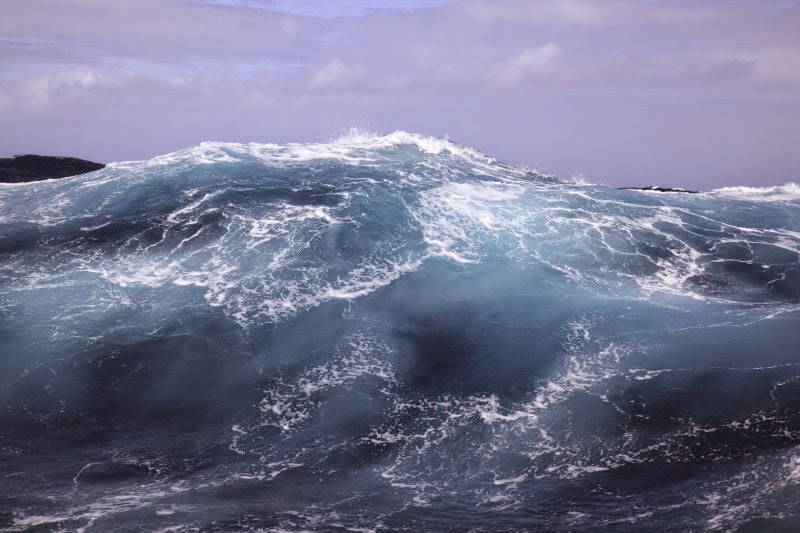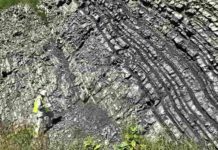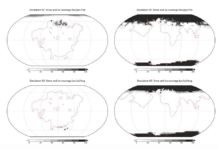
Scientists of the Alfred Wegener Institute, Helmholtz Centre for Polar and Marine Research (AWI), have deciphered a supposed climate paradox from the Miocene era by means of complex model simulations. When the Antarctic ice sheet grew to its present-day size around 14 million years ago, it did not get colder everywhere on Earth, but there were regions that became warmer. A physical contradiction? No, as AWI experts now found out, the expansion of the ice sheet on the Antarctic continent triggered changes in winds, ocean currents and sea ice in the Southern Ocean that in the end led to the apparently contrary developments. The scientists report this in a new study published online in the journal Nature Geoscience.
From a geological perspective, the ice sheet of Antarctica is still relatively young. As climate researchers know from sediment samples and calcareous Foraminifera shells, the ice sheet grew to its present-day size around 14 million years ago. At the same time the surface temperature of the Southern Ocean rose by up to three degrees Celsius back then — a seemingly contradictory development, for which climate scientists had no logical explanation for a long time.
“If you imagine that the Antarctic ice sheet grew to its present size in a period of 100,000 years, it seems reasonable to suppose that self-reinforcing climate processes set in during this growth period and further boosted the cooling effect. One could assume, for instance, that the expanding ice sheet reflected more and more solar energy into space, as a result of which the air over the continent became colder and strong offshore winds swept over the ocean, cooled the water and created a huge amount of sea ice. Our climate data, however, paint a different picture,” says AWI climate researcher Dr. Gregor Knorr.
He and his AWI colleague Prof. Dr. Gerrit Lohmann succeeded in depicting the climate conditions at that time in a coupled atmosphere-ocean model and in this way examined what changes the formation of the Antarctic ice sheet triggered in the climate system.
“Our simulation results show that the air temperature over the continent actually decreased by up to 22 degrees Celsius when the ice sheet grew, which led to cooling in some regions of the Southern Ocean. At the same time, however, the surface temperature in the Weddell Sea rose by up to six degrees Celsius,” says Gregor Knorr.
The AWI climate scientists looked for the causes of these contrary changes in their model experiments and found them in the wind. “The expansion of the Antarctic ice sheet led to changes in the wind patterns over the Weddell Sea, for example. As a consequence, there was a shift in the flow of warm water towards the pole and the sea ice in this marine region declined,” explains the AWI climate modeller.
These changes on the surface of the ocean brought about further changes in deep water, which in turn boosted the temperature rise in the surface water in a way unknown to the researchers up to now.
“Our model calculations helped us to develop a new understanding of Earth system processes back then. Today we can explain what influence the formation of the Antarctic ice sheet had on temperature curves in the Southern Ocean of that time and how the recorded climate changes came about in marine sediment cores,” says Gregor Knorr.
At the same time a great challenge arises for climate scientists as a consequence of these new insights. “On the one hand, our results show that we can understand climate processes by means of models to interpret data from climate history. On the other hand, the results also confirm that feedback mechanisms between individual climate factors are substantially more complex than we had previously assumed,” says Gerrit Lohmann.
Can these new model calculations and insights be used for forecasts regarding current climate change? Gregor Knorr: “No, not directly. Models used to simulate climate change scenarios for the coming 100 years have a much finer resolution and ice sheet changes are not taken into account. For us it was important to gain a better understanding of how the climate system reacts to dramatic changes over a period of 100,000 years and more. Nevertheless, we cannot rule out that similar mechanisms might also play a role for climate changes in the distant future.”
Note : The above story is based on materials provided by Alfred Wegener Institute, Helmholtz Centre for Polar and Marine Research.










